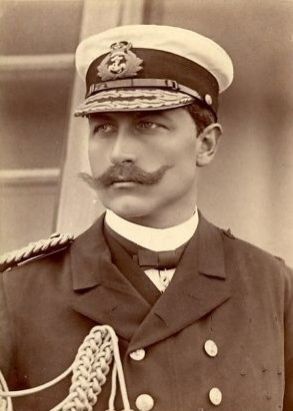Germany’s Mass Murder of Southwest Africans Set Groundwork for Nazi Holocaust
ANALYSIS

The Nazi Holocaust which killed 6-million Jews and up to 15-million people in total during the Second World War, was not the first state-sanctioned mass murder perpetrated by the German state. In fact, it was not even the first German genocide of the 20th century.
Thirty years before Adolf Hitler seized power as Germany's chancellor, German soldiers murdered up to 105,000 Herero and Namaqua tribe members in its Southwest Africa colony, now the state of Namibia.
While the final number of deaths was far less than the victims of the Nazi war machine, the genocide in Namibia featured some startling similarities with the WWII tragedy: the application of scientific theories of racial superiority, the formation of concentration camps; the meticulous recording of details of the mass killings; the need for “lebensraum” (living space) for the German people; demand for reparations; and a lengthy silence over German complicity in such crimes.
It was not until 2004 (a century after the massacre) that Germany formally apologized for the atrocity.
At a commemoration in the Namibian city of Okokarara, Germany's Minister for Economic Development and Cooperation, Heidemarie Wieczorek-Zeul, stated: We Germans accept our historic and moral responsibility and the guilt incurred by Germans at that time. Germany has learnt the bitter lessons of the past.
She characterized the killings in Namibia as a “genocide.”
She also said her government agreed to provide Namibia with economic aid amounting to about $14-million annually (descendants of the murder victims reportedly demanded $4-billion in compensation).
Under the Second Reich of Kaiser Wilhelm II, Germany expanded its colonial empire in Africa, including thousands of Germans who settled in the remote southwestern territory of Africa.
In 1884, under petition from a merchant named Franz Adolf Eduard Lüderitz, German Chancellor Otto von Bismarck seized all of South West Africa.
In 1894, to enforce German rule in the territory, imperial soldiers called the Schutztruppe, arrived.
While much of the landscape comprised a forbidding desert, the presence of fertile plains attracted large numbers of German farmers who forcibly seized land from the indigenous people.
By the end of 1903, the local Herero and Nama tribes rebelled against the colonialist occupation.
In response to the revolt, the Kaiser dispatched the Oberbefehlshaber (Supreme Commander) General Lothar von Trotha to Namibia with a grave warning to the African tribes: depart the country or suffer death.
The German troops carried out the threat through the hanging and shooting of men, women and children, with machine guns, forced starvation, the poisoning of water supplies, slave labor, rape and deportation.
“Any Herero found within the German borders with or without a gun, with or without cattle, will be shot... The Herero people must leave,” von Trotha declared.
Indeed, von Trotha's threat to wipe out an entire people would be echoed a few decades later by Hitler.
Moreover, when Hitler was in prison in the early 1920s, he read a tract called “The Principles of Human Heredity and Race Hygiene” by a German scientist and geneticist named Eugen Fischer, who studied the black and mixed-race people in the camps during the Namibian genocide.
The book reportedly emboldened Hitler's already virulent beliefs about racial supremacy and purity – and likely inspired him to plan the commission of a far greater genocidal campaign.
Namibia is today a poor country of less than 2-million people. A small minority of some 100,000 or so whites (many of them descendants of the original German settlers). Some still own vast farmlands illegally seized more than a century ago.
© Copyright IBTimes 2024. All rights reserved.





















